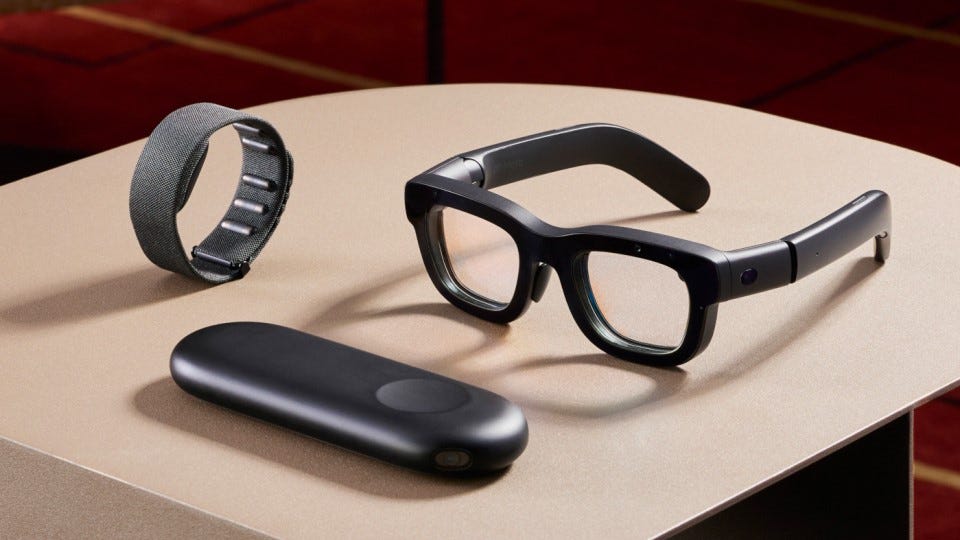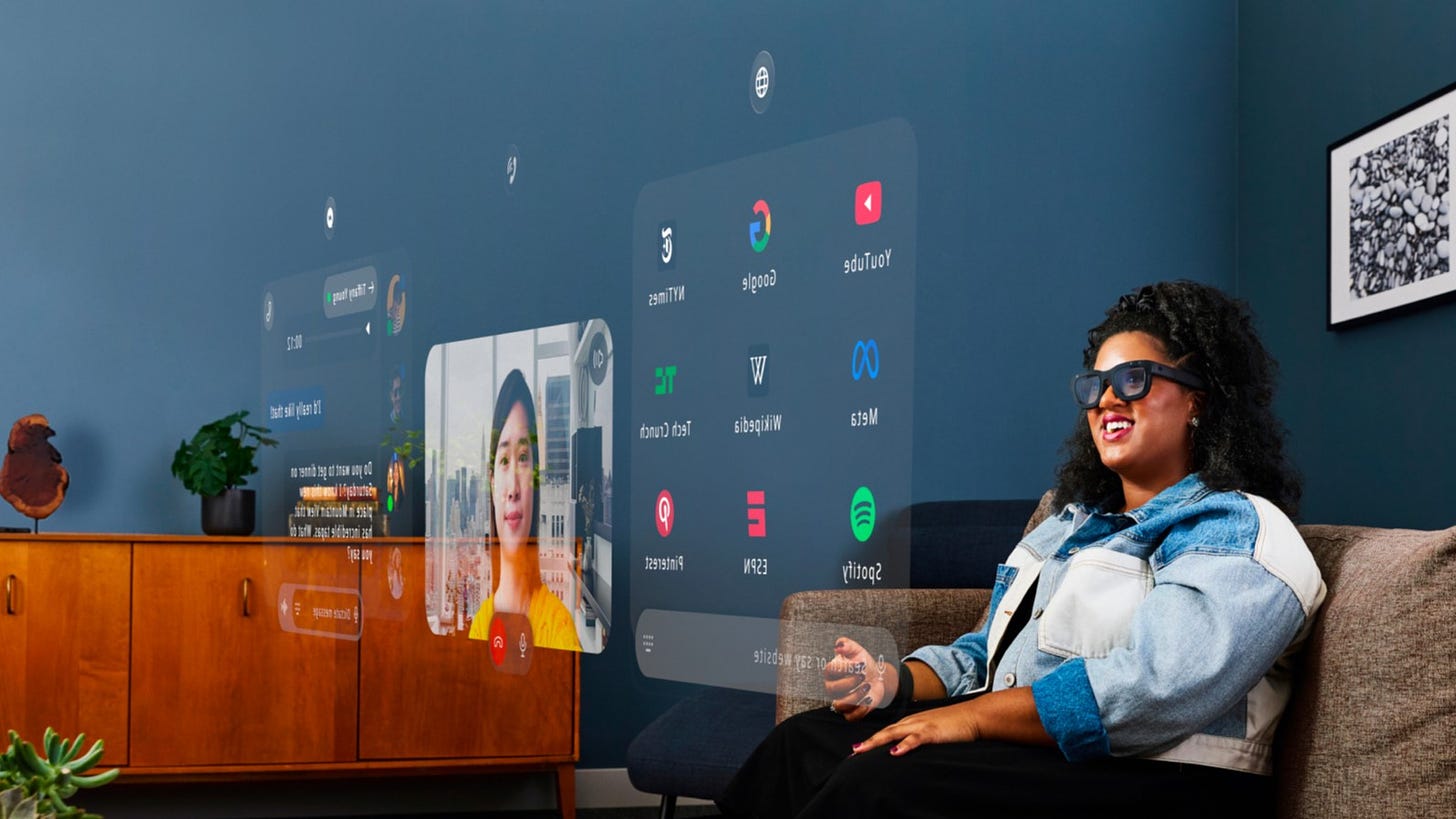Meta Orion glasses give us a glimpse of the future of AR that no one can buy
Orion delivers self-contained, fully wireless holographic AR glasses with AI
👓 Orion is Meta’s first true augmented reality glasses
🪟 70º field of view is the widest on any current AR glasses
📽️ Micro-LED projectors beam graphics to your eyes via waveguides
🤖 Meta’s generative AI overlays information onto physical objects in your vision
⚡ Controlled with neural impulses gathered from an EMG wristband
💻 Powered by custom Qualcomm processors housed in a “compute puck”
🚫 Likely never something you can actually buy
Meta unveiled its vision for the future with its first “true” augmented reality glasses called Orion.
The company has been working on AR and VR products for years, even famously rebranding the entire company on Mark Zuckerberg’s vision for the future of the “metaverse”. And while its Quest line of VR headsets has been popular for a few years, these are the first truly wireless, self-contained, holographic AR glasses from the social media company.
There’s a ton of technology packed into these glasses, which is impressive, considering they look like just a thick pair of eyeglasses. A total of seven cameras are mounted in the frames and the temples for eye and hand-tracking, as well as microphones and speakers for making video calls (even though callers can’t see what you’re looking at when wearing the glasses).
One of the most impressive features of Orion is the 70º field of view Meta managed to squeeze into these glasses, which is the largest of any dedicated AR glasses to date. The glasses work by projecting graphics onto your eyes via waveguides in the lenses.
Navigating the software on the glasses is done with eye and finger movement, very similar to how Apple’s Vision Pro operates, except in addition to the camera, Orion reads electrical impulses from your wrist via an electromyography (EMG) wristband. The wristband then translates these impulses into actions like clicks.
During the reveal, Zuckerberg talked about Orion as the vision for what AI-powered AR glasses could eventually look like. He believes glasses are the best way to experience AR and that voice will end up being the simplest, most efficient way to interact with AI, thus the voice interaction capabilities are reminiscent of the Humane AI Pin, albeit in a product that actually works.
The oddest part of the whole reveal was that this is a product no one will ever likely be able to buy, similar to the Snap Spectacles 5. Meta very clearly labeled this a prototype device and talked a lot about how much work is left to do – including bringing the cost down – so “the next version” will be ready for consumers.








